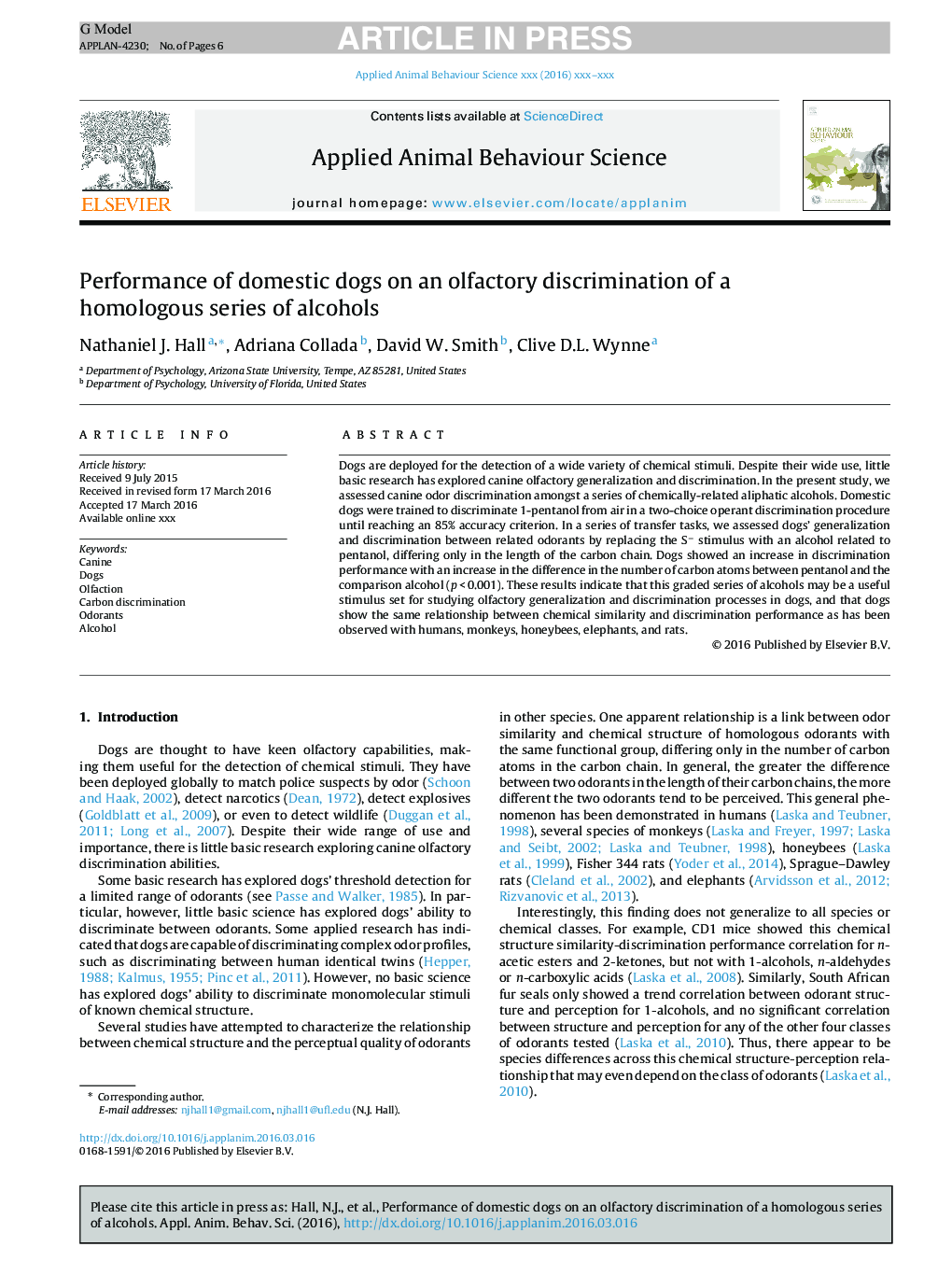| Article ID | Journal | Published Year | Pages | File Type |
|---|---|---|---|---|
| 6379393 | Applied Animal Behaviour Science | 2016 | 6 Pages |
Abstract
Dogs are deployed for the detection of a wide variety of chemical stimuli. Despite their wide use, little basic research has explored canine olfactory generalization and discrimination. In the present study, we assessed canine odor discrimination amongst a series of chemically-related aliphatic alcohols. Domestic dogs were trained to discriminate 1-pentanol from air in a two-choice operant discrimination procedure until reaching an 85% accuracy criterion. In a series of transfer tasks, we assessed dogs' generalization and discrimination between related odorants by replacing the Sâ stimulus with an alcohol related to pentanol, differing only in the length of the carbon chain. Dogs showed an increase in discrimination performance with an increase in the difference in the number of carbon atoms between pentanol and the comparison alcohol (p < 0.001). These results indicate that this graded series of alcohols may be a useful stimulus set for studying olfactory generalization and discrimination processes in dogs, and that dogs show the same relationship between chemical similarity and discrimination performance as has been observed with humans, monkeys, honeybees, elephants, and rats.
Related Topics
Life Sciences
Agricultural and Biological Sciences
Animal Science and Zoology
Authors
Nathaniel J. Hall, Adriana Collada, David W. Smith, Clive D.L. Wynne,
